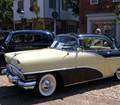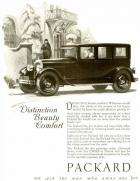|
Re: Need tips on repairing plastic
|
||||
|---|---|---|---|---|
|
Forum Ambassador
|
I don't know if the location of the cracks might be in a spot subject to stress but if so, I would wonder just how well the epoxy would stay attached once you smooth it down to the thickness of the panel on thin material that will flex .
Does the epoxy kit have any kind of backing material? If so that might be a fix but if not, perhaps it would be worthwhile to get some fiberglass cloth or mat and lay some in the back of the panel to provide some structure. There used to be sticky pre-saturated roughly 6" wide pieces of fiberglass available at parts stores. They were used for DIY cheapo body repairs and to fill holes that might have been cut for an accessory and then needed filling. If they are still available, something like that might provide some reinforcement. Once they are out of the airtight envelope and attached, they will cure and become hard as metal. Once there is support, use the epoxy in the kit to fill and smooth the cracks from the front. Good luck finding a matching paint. You may have to paint both sides plus other things to have everything match again.
Posted on: 2013/9/22 18:13
|
|||
|
Howard
|
||||
|
||||
|
Re: Need tips on repairing plastic
|
||||
|---|---|---|---|---|
|
Home away from home
|
Check out Eastwood. I believe I've seen some kits for patching plastic. I also agree with the fiberglass or mesh material for reinforcing, especially on the back side. You can find this stuff at Home Depot or Lowes in the drywall section.
Posted on: 2013/9/22 18:34
|
|||
|
||||
|
Re: Need tips on repairing plastic
|
||||
|---|---|---|---|---|
|
Home away from home

|
Dear Mr. Bug:
I would use West Systems G-Flex with faring filler. It's an expensive product used to make boat bodies. But if you try the store bought stuff you will see your work fail. In fact if the bottom falls out of a carburetor G-Flex can fix it. G-Flex will also do very well on steering wheels that are to be painted. It's also great for metal work.
Posted on: 2013/9/22 19:52
|
|||
|
||||
|
Re: Need tips on repairing plastic
|
||||
|---|---|---|---|---|
|
Home away from home
|
"plastic" covers a wide range of materials and the right adhesives and paints depend on which one you are working with
Posted on: 2013/9/22 20:16
|
|||
|
||||
|
Re: Need tips on repairing plastic
|
||||
|---|---|---|---|---|
|
Home away from home

|
Thank you all. These are all very sound suggestions. I have definitely considered having to paint the entire cover and I am pretty sure I can find a color to match. This cover is not especially flexible -- it is the hard type of plastic used in the 1950s. Most of the cracks were caused by people getting in and out of the back seat; nothing too serious.
Posted on: 2013/9/23 6:51
|
|||
|
You can make a lot of really neat things from the parts left over after you rebuild your engine ...
|
||||
|
||||
|
Re: Need tips on repairing plastic
|
||||
|---|---|---|---|---|
|
Home away from home

|
Here is the result of my operation.
I rough sanded the areas of the cracks on the plastic seat skirts and cleaned the areas with rubbing alcohol. For the one cracked from the top -- located at the back corner where passengers inadvertantly kicked it when climbing in -- I cut a piece of plastic from a plastic container to fit the back side of the skirt and using a combination of plastic weld epoxy and Gorilla glue super glue, I secured the plastic in place as a brace and used clamps to hold it place. The other cracks were successfully filled by the plastic weld. I allowed the fixes to set for 24 hours to ensure they would hold. Next, I went to an auto finish store and we were able to match the color of the skirt, which, interestingly, was a minor variation of a 2004 Toyota color! Back home, sanded the fixes and scruff-sanded the rest of the skirts for painting. I prime-painted the fixes, then tried to paint the skirts using a fine brush. I was not satisfied with the brush strokes apparent on the skirts, so I got another idea. I fine-sanded the skirts, then, using a cloth-covered wax applicator pad, I dabbed the finish paint onto the skirts and was very pleased with the overall results. Finally, I lightly applied rubbing compound to the skirts to smooth out the paint. I think the results look almost identical to the original.
Posted on: 2013/9/27 9:39
|
|||
|
You can make a lot of really neat things from the parts left over after you rebuild your engine ...
|
||||
|
||||








